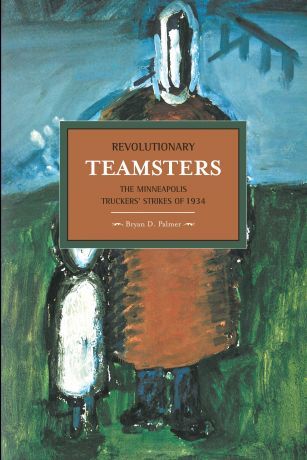Arts
You are here
Revolutionary Teamsters

September 20, 2015
Like tectonic plates, radical politics and organized labour in the United States have often crashed into each other throughout history, creating seismic social upheavals in the unlikeliest of places. For those who believe that radicalism is some sort of foreign contagion, shipped in from Europe into the US, one need only to glance at the history of America: from Thomas Paine to the IWW to the Black Panther Party, radicalism has imbued the US from its inception.
Revolutionary Teamsters is a glimpse of one of those collisions mentioned above, as revolutionary fervor became intertwined within one of the most reactionary labour groups in the States, the Teamsters. The ensuing mass strike in the chilly city of Minneapolis during the 1930s is one of the seminal events in the radical history of a country that would like to believe that it is allergic to militant socialism.
Context
By the beginning of the 1930s, organized labour had already diverged into reactionary and progressive camps; the Red Menace scare of the early 1920s had dealt a death blow to the IWW and other domestic socialist organizations, but it was hard to deny the appeal of a Marxist system during the worst period of the Depression. On the other hand, conservative labour organizations such as the AFL and typified by personalities like Sam Gompers had risen to take the premier seat of “respectable” labour, labour that the bosses could “do business with.” The Teamsters were almost a caricature of that sort of conservatism; it was a reactionary, racist body that had already begun to embrace the gangster lineage for which it is infamous.
In Minneapolis, the teamsters and other even less enfranchised working groups found themselves bereft of aid, during a period when work was an employers’ market. Bosses felt free to push their employees in whatever direction they felt like—knowing the desperation of those in need of a job—by cutting wages and extending hours. In an environment such as Minneapolis, where the real effects of basic living conditions were brought to the fore with every passing winter, workers (as exemplified by the Teamsters) had to make do with whatever pittance that their bosses tossed out to them. These Teamsters were denied any kind of assistance by their “Fraternal” Order (who were entirely in bed with management and opposed to anything that smacked of progressive/radical measures) and the situation had become desperate.
In the realm of organized radicalism, Stalinism had gone worldwide by this point, and the Communist Parties of the world (and their fellow traveller brethren, such as the Workers Party in the US) had followed suit. Those who held contrary beliefs to the crushing autocracy of Stalinist politics were branded Trotskyites and were promptly ousted. The disenfranchised Red rebels found themselves in the same sort of position as the independent Teamsters, locked out of their own creation by backwards, dictatorial elements.
Mass strike
These two forces joined together in the despondent days of the early Depression in Minneapolis, with Marxists and ex-Communists linking hands and adding organizational skill to the mounting numbers of disenfranchised Teamsters. They created a new union, a safe haven for workers who had grown sick of the total inaction of their supposedly protective “Fraternal” organization. Following a clash with predatory employers, they went on strike. This triggered a snowstorm of sympathy strikes throughout the normally radical-free city, creating a mass strike on par with the earlier mass strike in Winnipeg. Please note the similarity in unforgiving physical environments of the two cities: the strikers were literally fighting for their lives in the most adverse conditions.
Bryan Palmer outlines all of this in masterful prose, with an excellent breadth of knowledge of the forgotten/forbidden history of the Teamsters, an organization now synonymous with organized crime (the first inklings of that direction were felt in Minneapolis). Palmer is well acquainted with both organized labour and organized radicalism, two movements that were not inextricably linked in the US.
History is narrative, and the best histories read almost like exciting works of fiction—Revolutionary Teamsters falls neatly into that category. Palmer also includes an incredibly depressing post-script of the fate of Trotskyists in the US, a chilling reminder of what international Stalinism was capable of, even in the heartland of liberal capitalism. As Jon Stewart once said, “The eternal fate of the noble and enlightened is to be crushed by the armed and dumb”, and the actions of violent Stalinist thugs mirrors the violence displayed by the reactionary strike-breakers.
This wonderful slice of American Pie is part of Haymarket’s excellent Historical Materialism series, which carries copies of Marxist classics such as this volume. It is also an affordable book, which unfortunately is not the case with many Historical Materialism titles (there are more than a few books in the series that cost as much $50, making them as inaccessible as they were when they were out of print). For anyone who thinks that Trotskyists had their heads in the clouds and held no contact with the actual working class, this book is essential.
Order online from Haymarket Books.
If you like this article, join the Rage Against the System conference, September 26 in Vancouver or Toronto.
Section:










